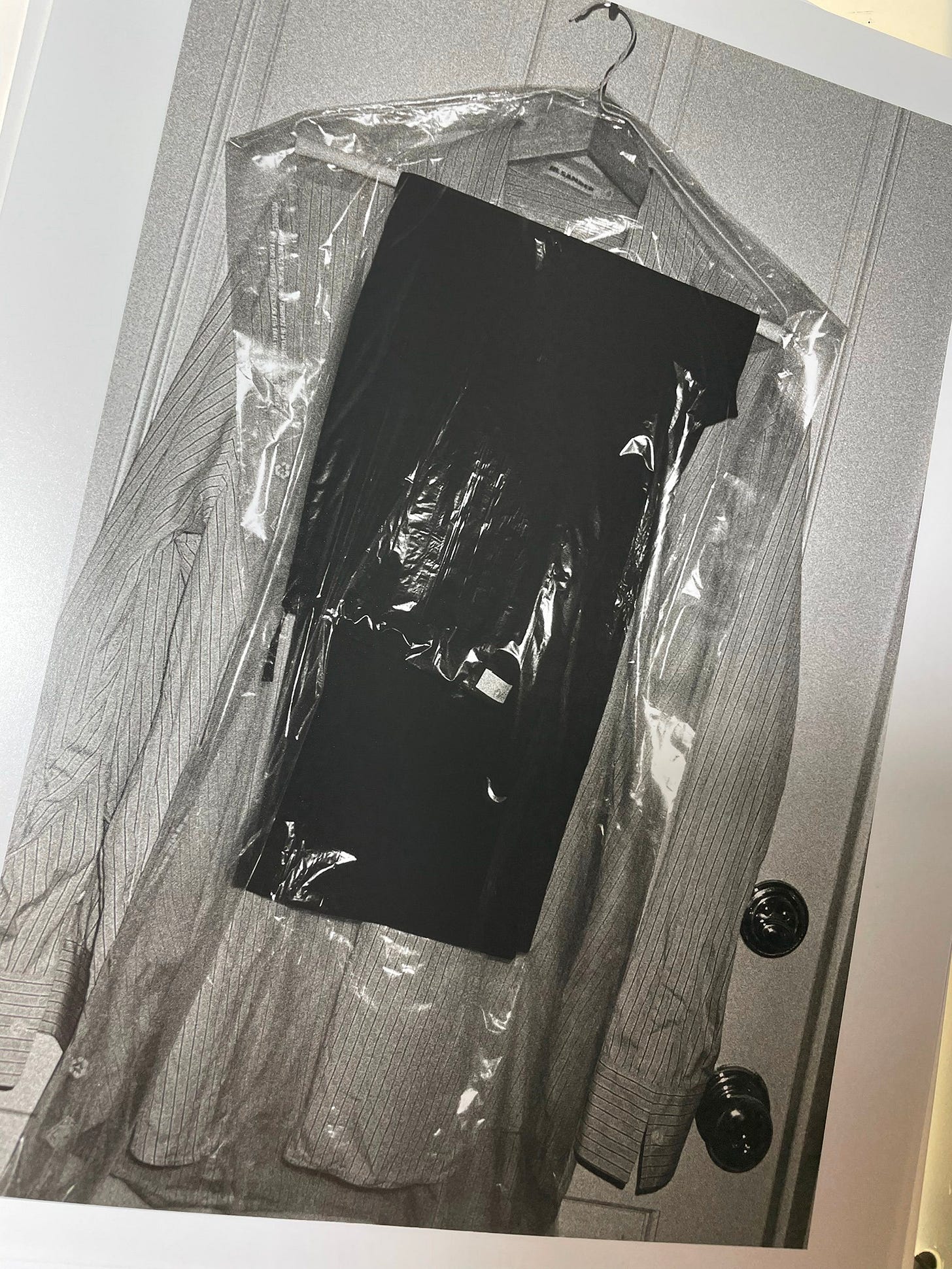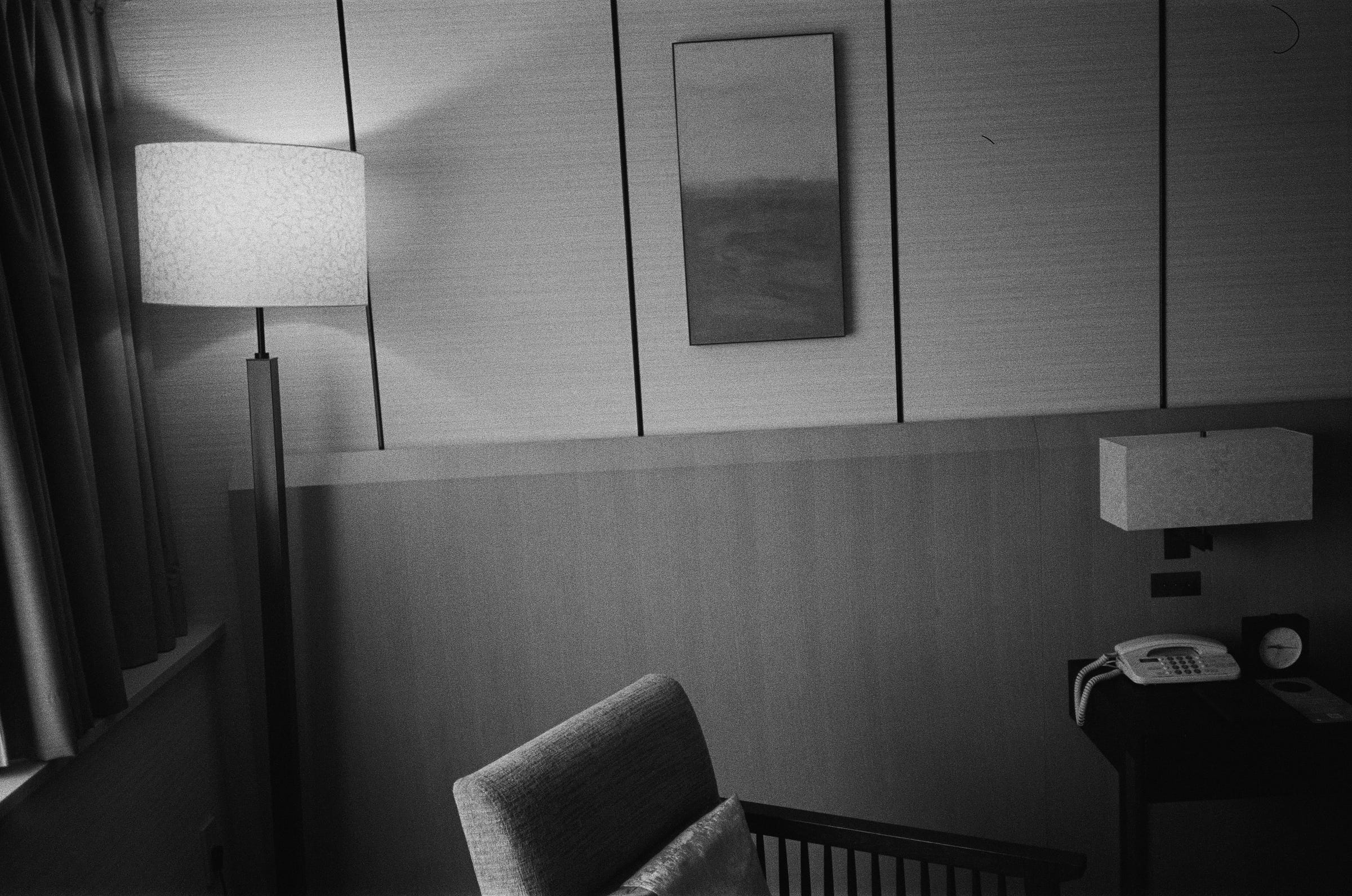Sometime last week I had my arms full as I left La Brea Cleaners—I came away with one pair of trousers and two Levi’s too-big newly hemmed because unfortunately, despite my best wishes, I am not 5’9” will never be 5’9” and so can’t reasonably wear a 34 inch inseam and that’s that. Shirts cleaned and pressed, and a delicate sweater dry cleaned rounded out the rest. I take all my jeans to Denim Revival on West 3rd to reinforce weak threads or for invisible repairs. The shop’s before and after images are masterful.
I am deeply interested in everydayness. Things so mundane they almost go unseen.
It’s why I’m drawn to and photograph boring things like this. There is beauty in glamour and fantasy and performance, of course. But too, in the ordinary and every day. I have a fear of being seen despite wanting to be understood.
In some way, I think these photographs do what I can’t—in my absence, hopefully, form an outline and articulate a shape that’s only me. A portrait without a subject.
It’s this reason I felt such a kinship when I discovered the work of artist, Sophie Calle. If you keep up with me on Instagram, you saw the unfolding of my little self-study date at The Getty last week. The museum has a small reading room on at the Research Institute that uncovers the history of photobooks by women.
I spent hours at the library and Sophie Calle’s book The Hotel is still top of mind a week later. The photo book documents Sophie’s time as a housekeeper at a hotel in Venice, and her studies of the guests. Only you never explicitly see photos of her or the guests. Instead, she photographed their rooms, belongings, and took note of their conversations while on the job without them knowing—even nabbed a pair of shoes! My kind of crazy bitch. You can find an excerpt of the book from Harper’s Bazaar here.
I think revealing without saying so much is exciting and COOL. We can all learn from Sophie.
It was also moving to see as many of these women did not so long ago. There were beautiful documents of indigenous life, painful portraits of mental health patients in Italian psych facilities in the 60s and 70’s, one woman’s personal handwritten photo journal of experiences growing up female including first-person-view of an abortion being performed, women’s expanded freedoms in tandem with rapid industrialization in Japan, studies on women’s postures and rogue lifestyles and work.
Some photographers in the exhibition if you’d like to look up their work for yourself: Aënne Biermann, Carla Cerati, Abigail Heyman, Tamiko Nishimura, Diane Arbus, Marianne Wex, Ruiko Yoshida, Marcia Resnick, Hiromix, Tina Barney, Deanna Templeton, and Catherine Opie.
There’s such immense responsibility in what’s seen and who get to do the seeing. Our lives are filled with a million of these mundane moments, that’s what makes a life.
Hope you’re enjoying the spring weather.
That’s all for now,
J










